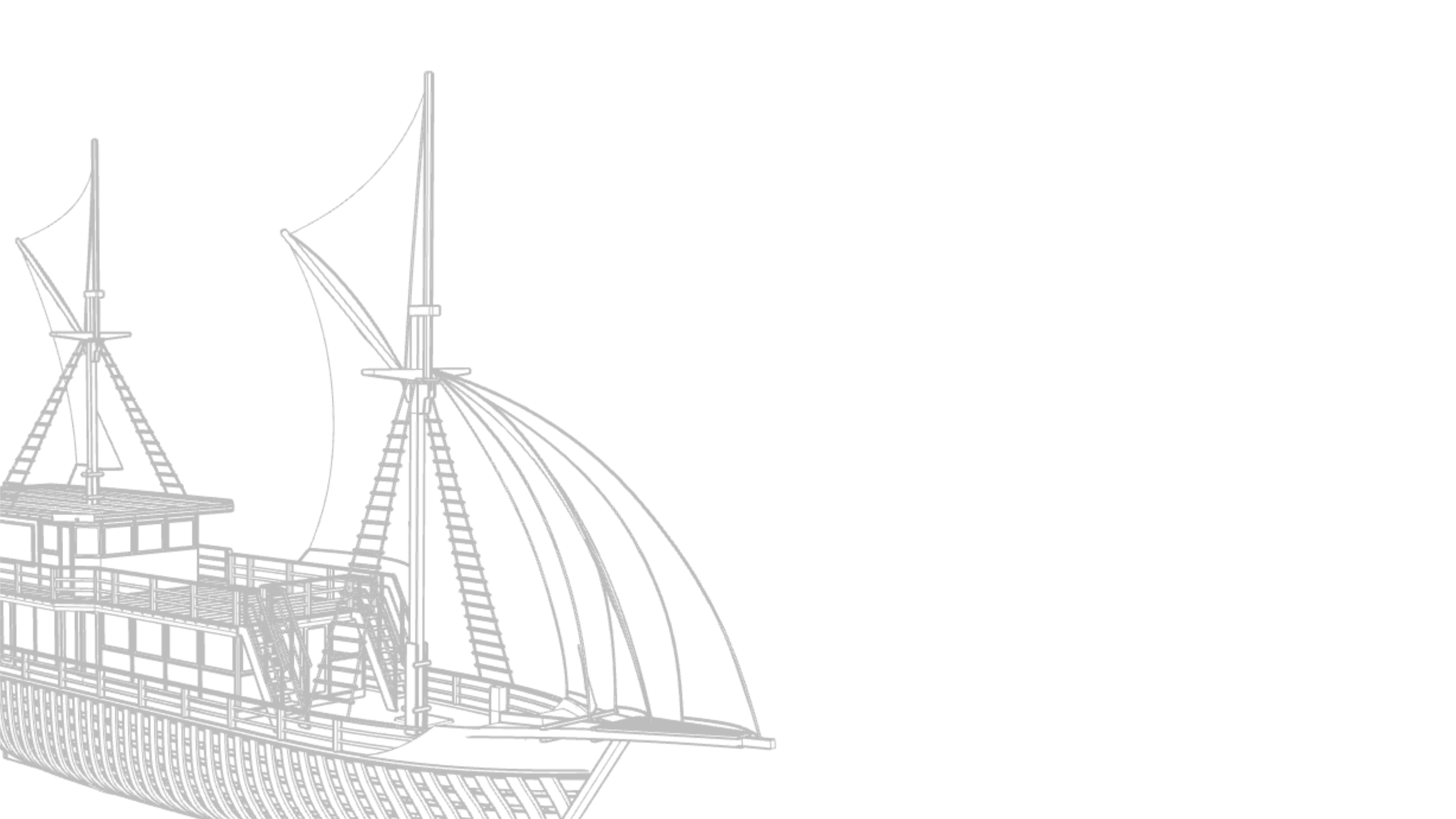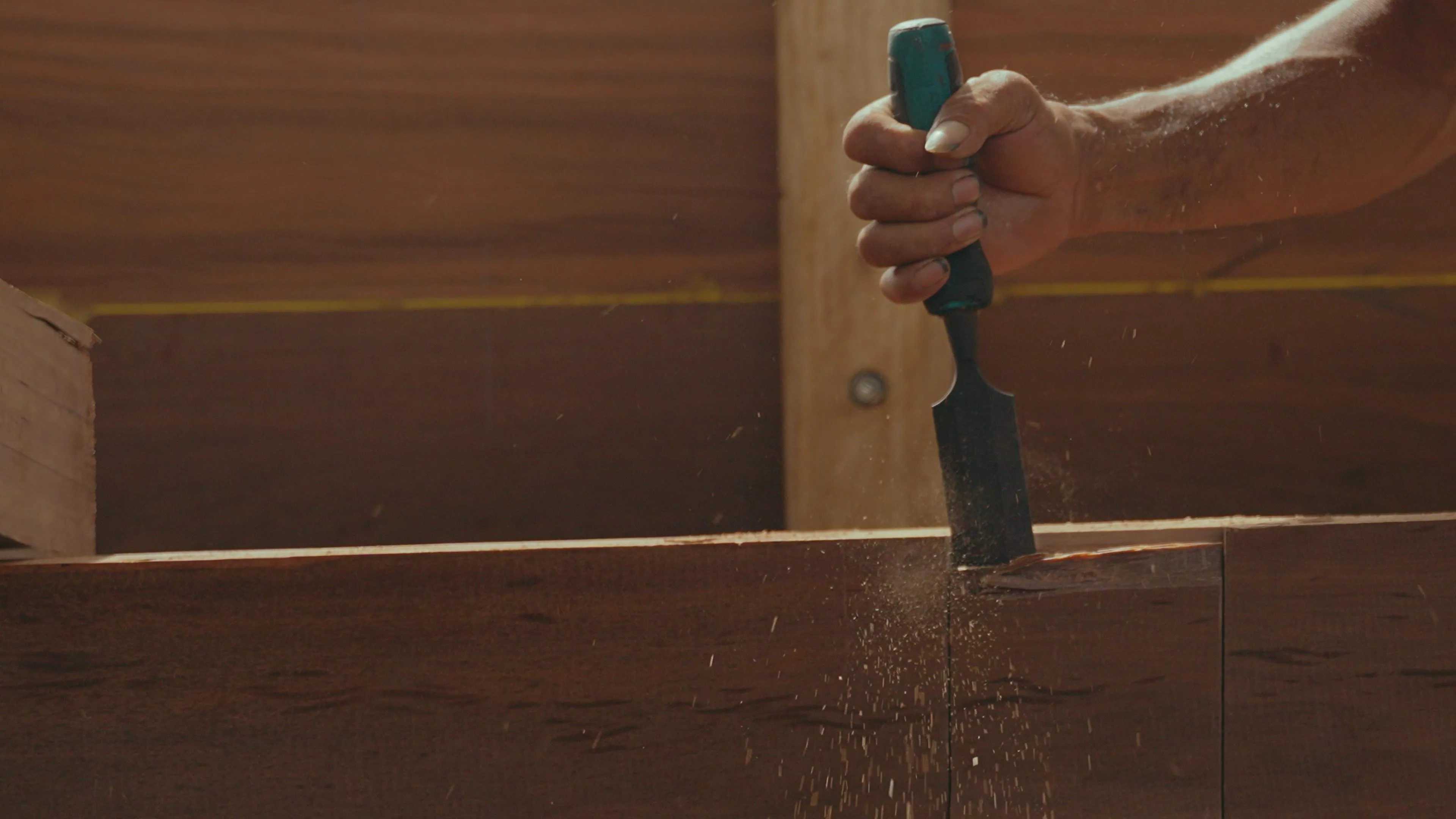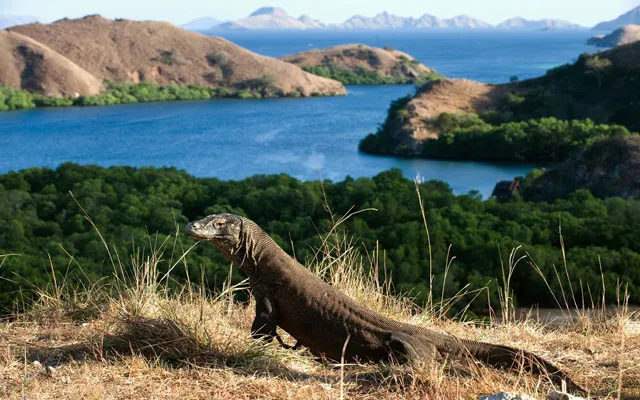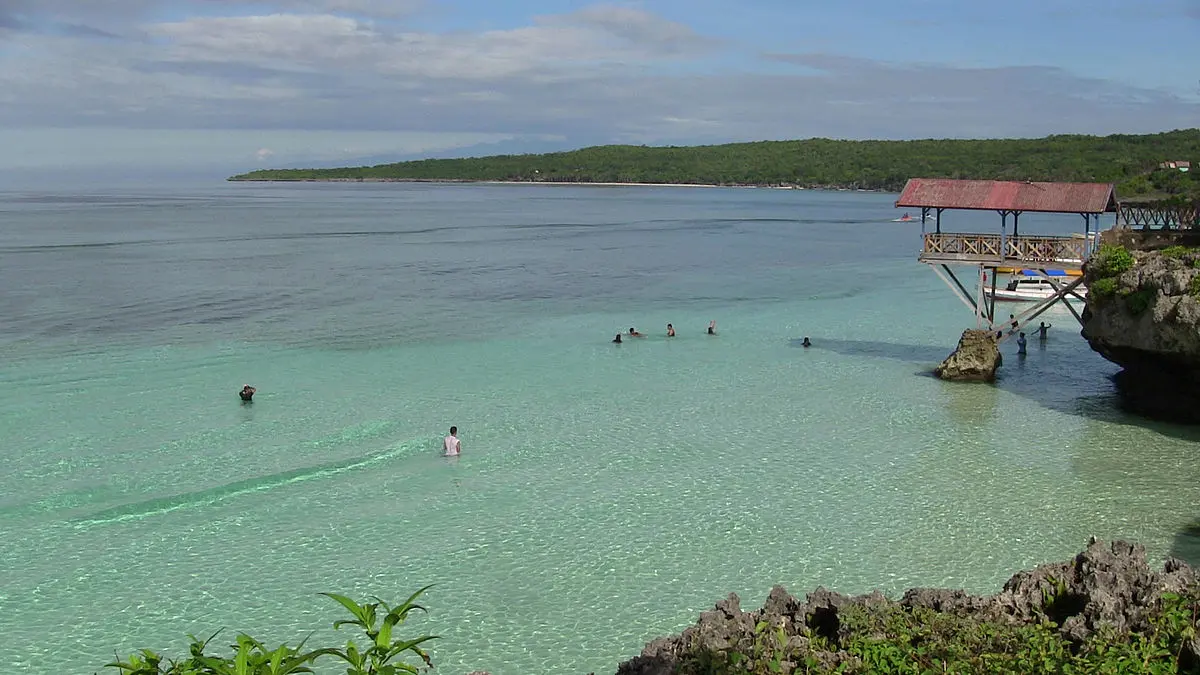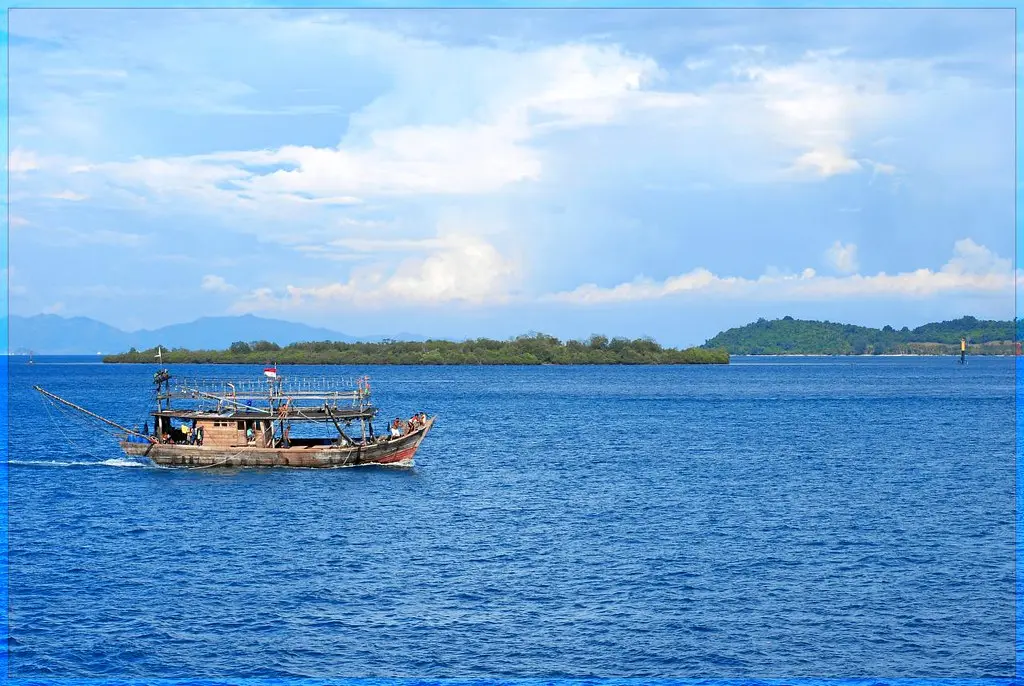7 Types of Traditional Indonesian Boats You Can Still See Today
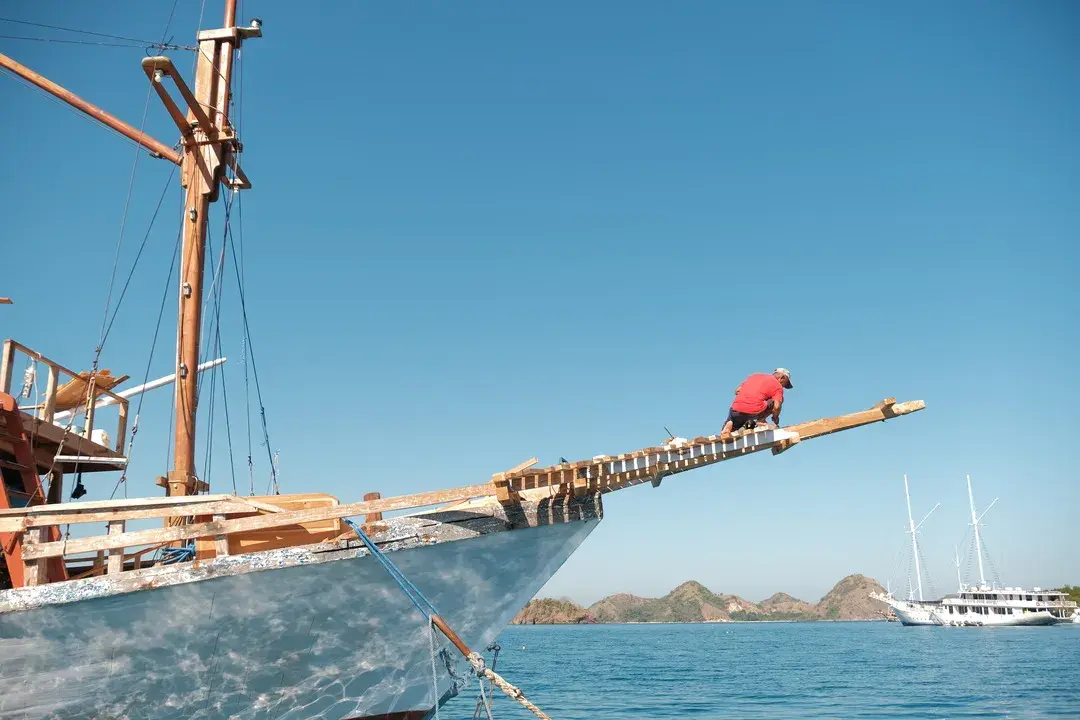
The types of traditional Indonesian boats reveal more than just how people travel—they reflect the spirit of an island nation shaped by the sea.
As the world’s largest archipelago, Indonesia is home to hundreds of unique vessels, each crafted by hand and guided by generations of seafaring wisdom. These boats are living stories of culture, trade, and survival that continue to sail today.
Before you plan your tropical escape or cultural immersion, let’s set sail through the unique boats that have defined island life for centuries.
Read Also: Who Are Indonesia’s Sea Nomads? Discover the Bajau People’s Ocean Life
Why Traditional Boats Matter in Indonesian Culture?
In Indonesia, traditional boats are more than just a means of transportation—they are vessels of identity, belief, and survival.
Across thousands of islands, boats have long been essential for daily life: connecting remote communities, supporting fishing livelihoods, and enabling inter-island trade long before modern infrastructure existed.
Each region has developed its own boat designs, shaped by local materials, weather patterns, and cultural practices.
These boats often carry sacred value, with their construction involving spiritual rituals, offerings, and ancestral blessings.
The art of boatbuilding itself is deeply intergenerational—skills are passed from parent to child, often without blueprints, relying instead on memory, intuition, and community wisdom.
To better understand their significance, consider how traditional boats play a role in:
- Daily life: transporting goods, fishing, and commuting between islands
- Trade and economy: enabling centuries of spice trade and coastal commerce
- Spirituality and ritual: involving ceremonies for launching boats or honoring the sea
7 Types of Traditional Indonesian Boats That Reflect the Nation’s Soul
Indonesia’s traditional boats are as diverse as the cultures and coastlines that shape them. Crafted by hand and guided by centuries-old seafaring wisdom, each vessel tells a story of survival, artistry, and identity.
Let’s dive into seven iconic types of traditional Indonesian boats below:
1. Phinisi
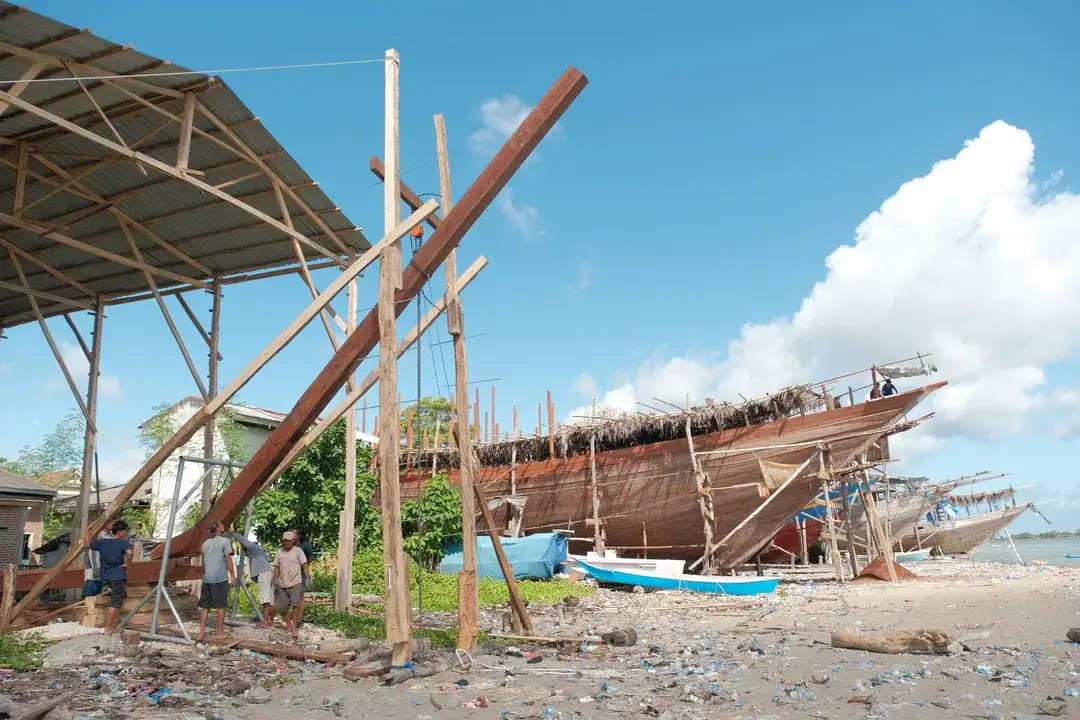
The Phinisi is perhaps Indonesia’s most iconic traditional boat, known for its majestic two-mast schooner design and deep cultural roots in the Bugis and Makassarese communities of South Sulawesi.
Recognized by UNESCO as an element of Intangible Cultural Heritage, the Phinisi is a symbol of Indonesia’s maritime identity and craftsmanship.
Key features:
- Traditionally built by hand without modern blueprints
- Constructed from tropical hardwoods like ironwood and teak
- Two main sails, often referred to as gaff-ketch rigged
- Historically used for trade and long voyages across the archipelago
2. Jukung
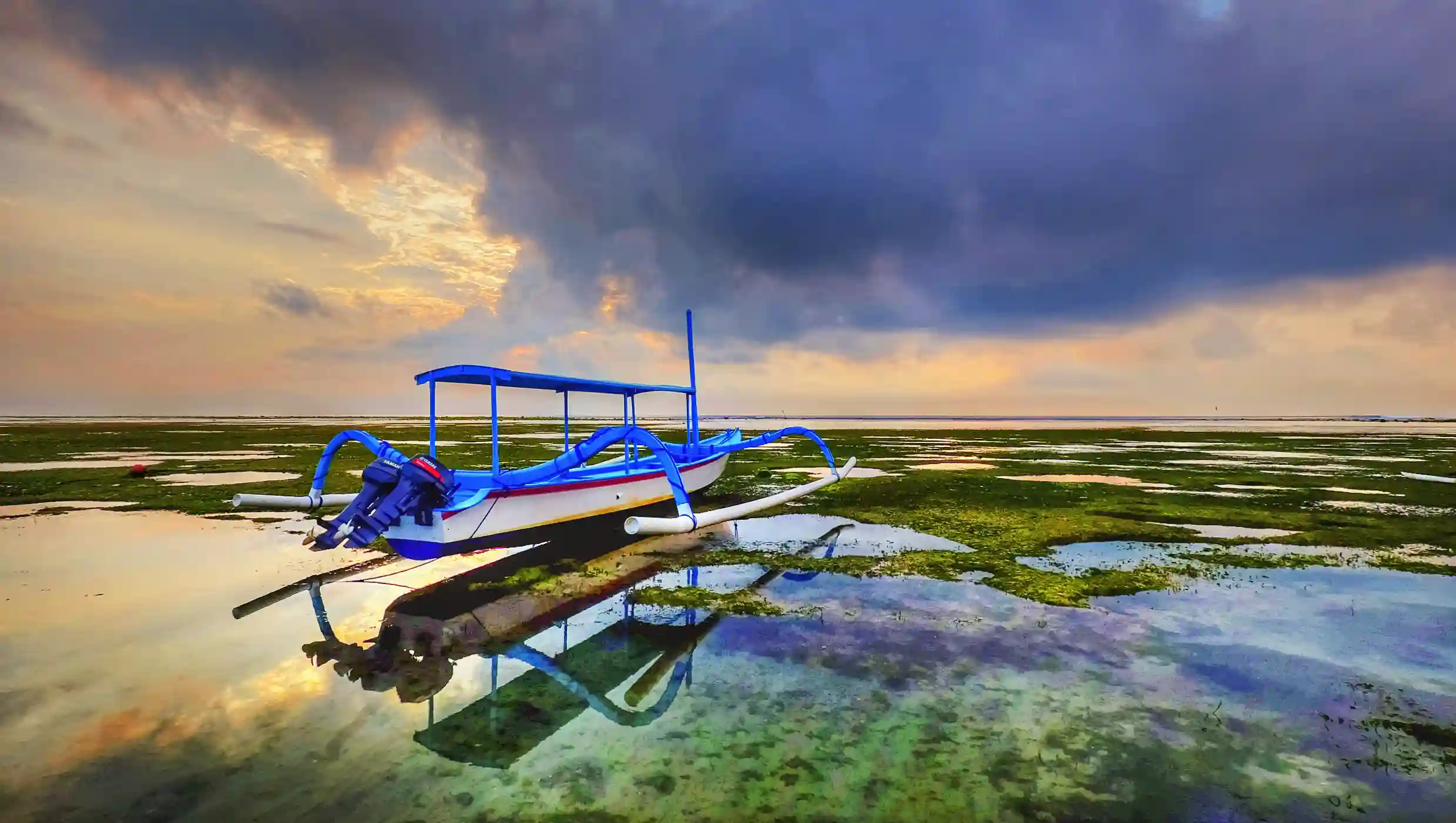
The Jukung is a small, traditional outrigger canoe found mainly in Bali and East Indonesia. Known for its vibrant colors and decorative patterns, the Jukung is often used by local fishermen and for short sea journeys between coastal villages and nearby reefs.
What makes Jukung special:
- Equipped with a crab-claw sail that allows smooth sailing even in shifting winds
- Features double outriggers for balance in the open sea
- Often painted with bright, symbolic motifs and eye designs for spiritual protection
- Used for fishing, ceremonial events, and increasingly, as eco-tourism transport
3. Sandeq
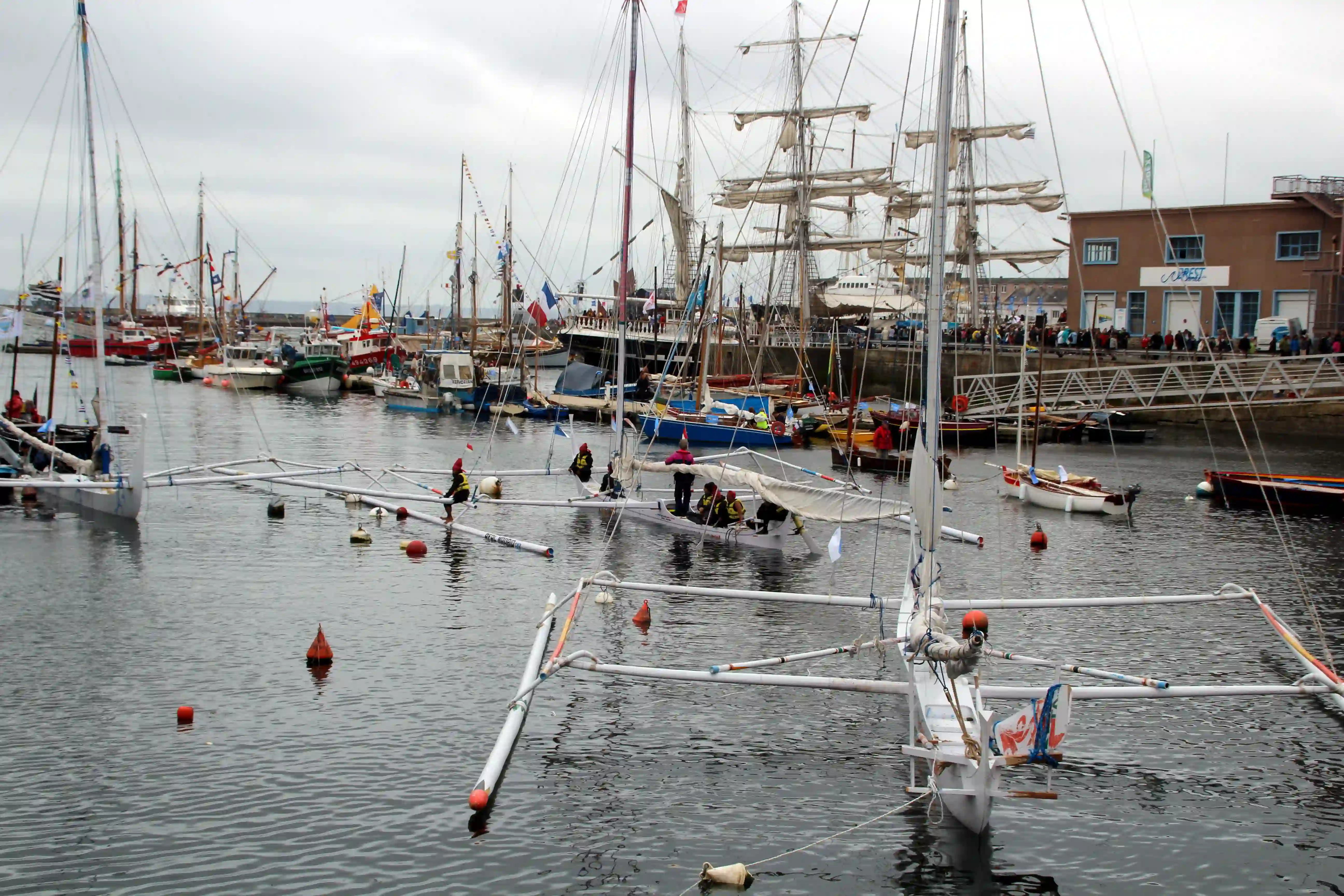
The Sandeq is the fastest traditional sailing boat in Indonesia, originating from the Mandar people of West Sulawesi. Its name means “pointed,” referencing its aerodynamic, narrow build that cuts through waves with remarkable speed.
Highlights of the Sandeq:
- Can reach speeds of up to 20 knots, powered only by the wind
- Features a slim main hull with two outriggers for stability
- Sails are designed for speed racing and efficient tuna fishing
- Celebrated in the annual Sandeq Race, a long-distance sailing competition from Mamuju to Makassar
Unlike other traditional boats, the Sandeq reflects a daring and dynamic side of Indonesian maritime culture—built for those who live in harmony with wind and waves.
4. Kora-Kora
The Kora-Kora is a long, dramatic war canoe originating from the Maluku Islands. Once used for battle and regional defense, it now plays a more peaceful role in ceremonial events and traditional festivals.
Unique aspects of the Kora-Kora:
- Often manned by dozens of rowers in synchronized formation
- Adorned with flags, carved ornaments, and cultural symbols
- Still used in annual sea festivals such as the Festival Kora-Kora in Ternate
- Emphasizes unity and community spirit through its group-based paddling
Experiencing a Kora-Kora procession is like watching a dance upon water—an event that blends spiritual belief, performance, and collective strength.
Read Also: How to Travel from Singapore to Bulukumba: A Complete Guide
5. Lancang
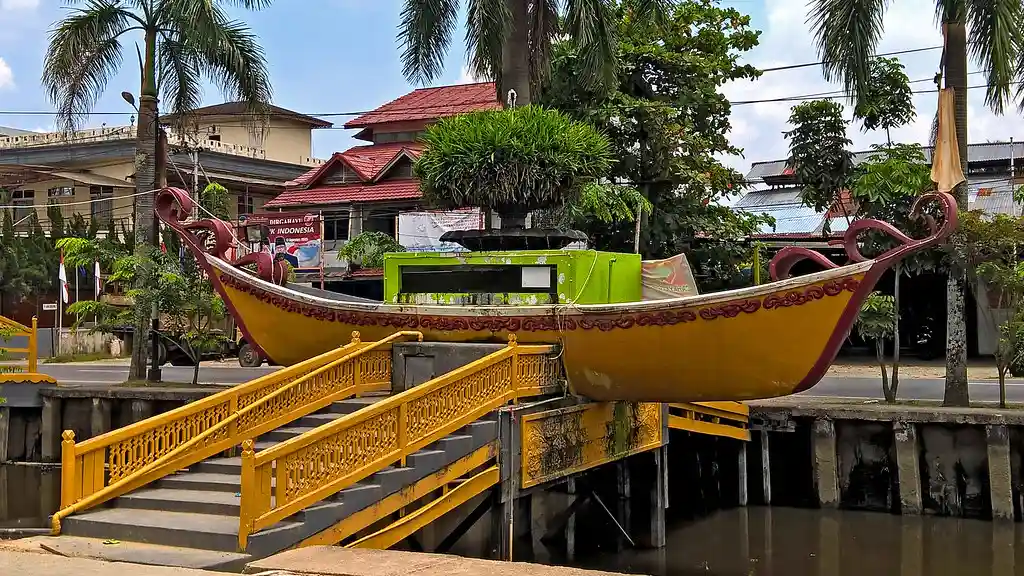
The Lancang is a traditional royal barge once used by Malay sultans in Sumatra and the Riau Islands. Unlike purely functional fishing vessels, the Lancang carries significant symbolic weight and was historically used for diplomatic missions, rituals, and processions.
Distinguishing traits:
- Constructed with graceful lines and fine carvings
- Often painted in gold and bright royal colors
- Used in rituals like sending offerings to the sea or welcoming dignitaries
- Appears in royal and national celebrations today
Though rare in active use, the Lancang reflects the noble and ceremonial role of boats in Indonesian society.
6. Mayang
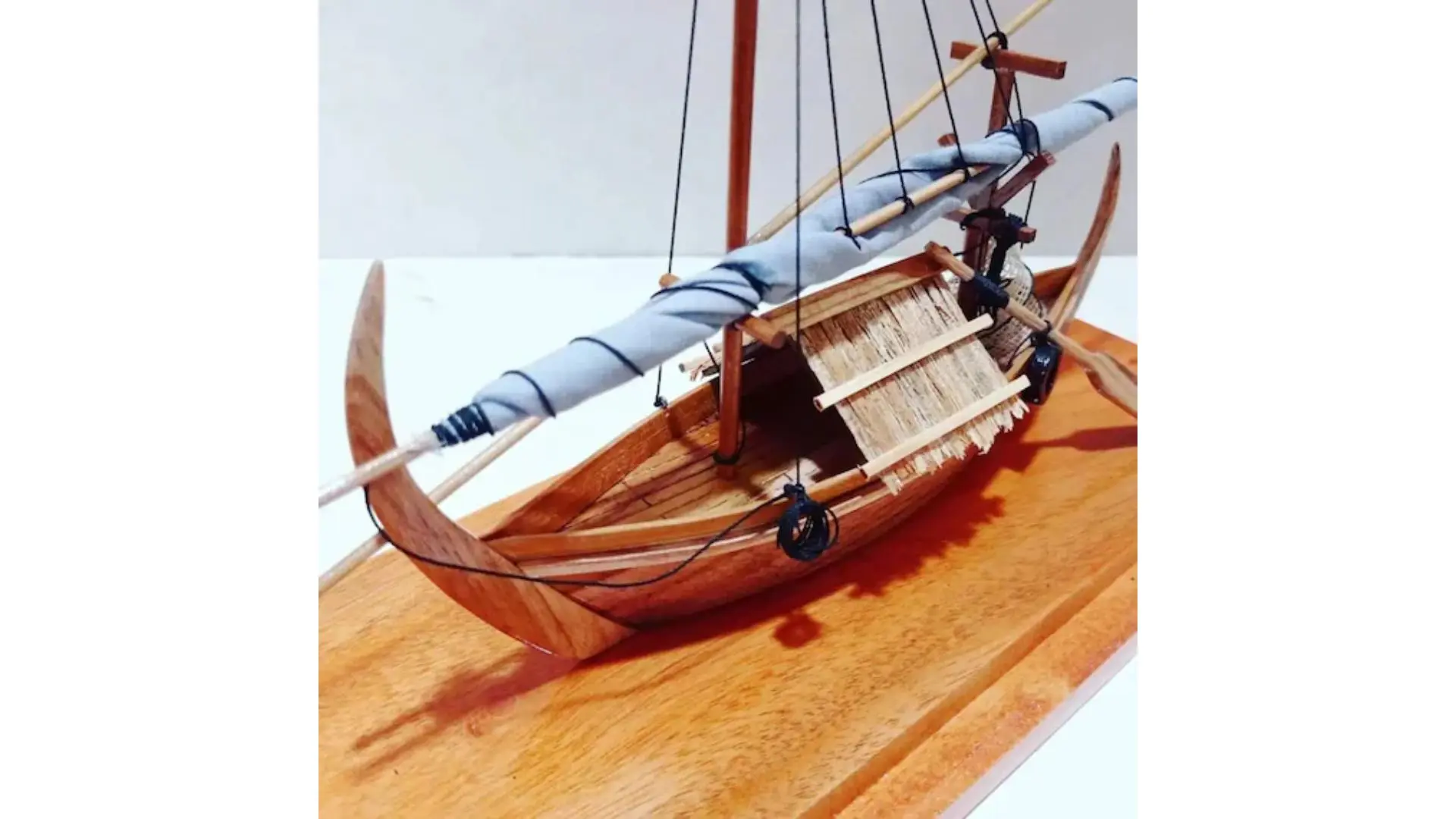
The Mayang is a small, practical fishing boat used along the coasts of Java, especially in Central and East Java. Less ornate than others, its importance lies in its daily use and cultural continuity among coastal fishing communities.
Why the Mayang matters:
- Typically used for night fishing, often equipped with lanterns
- Simple, open-deck design for easy net casting
- Built from affordable, local wood with little ornamentation
- Represents Indonesia’s working-class maritime culture
You may see fleets of Mayang boats lining the shore at dawn, returning with fresh catches that feed local markets and villages.
7. Paduwang
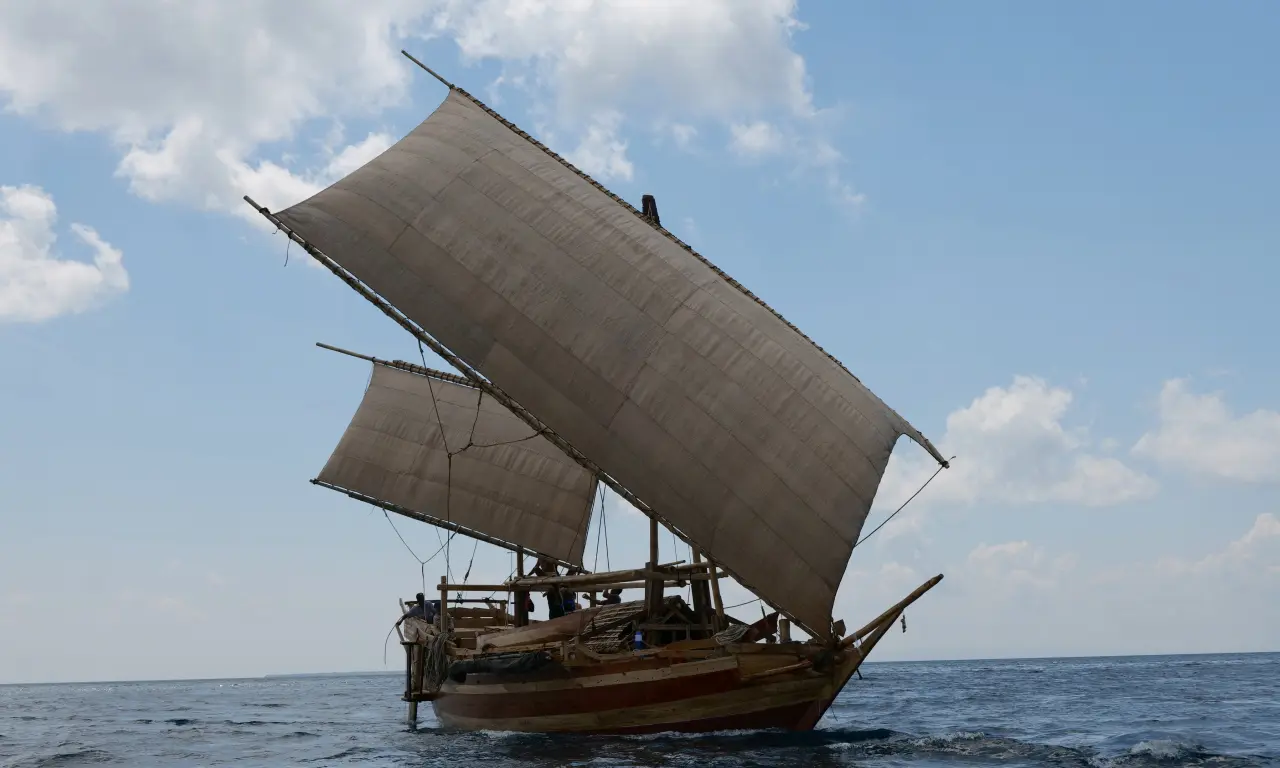
The Paduwang is a twin-outrigger sailboat primarily used in Madura and East Java. It has a wide, flat hull and a unique rectangular sail that gives it a distinct appearance from other vessels.
Features of the Paduwang:
- Twin outriggers provide balance in rough coastal waters
- Sail made of woven palm or canvas, with a wide, almost rectangular shape
- Used for transporting goods, fishing, and inter-island travel
- Plays a role in community gatherings and traditional ceremonies
While not as widely known as the Phinisi or Jukung, the Paduwang is a vital link in coastal transport and a reflection of Madurese maritime tradition.
Why Do These Boats Still Matter Today?
Traditional Indonesian boats aren’t just cultural artifacts—they’re living, breathing parts of everyday life that continue to evolve with the times.
Today, these boats play a vital role not only in preserving heritage but also in supporting sustainable tourism, community development, and environmental awareness.
Here’s why they still matter:
- Cultural preservation: Boatbuilding traditions are passed down through generations, keeping local knowledge and identity alive.
- Tourism with purpose: Experiences like Phinisi sailing trips or shipyard visits allow Voyagers to engage directly with local culture.
- Support for local livelihoods: Artisans, fishermen, and guides benefit economically when travelers choose authentic, community-based experiences.
- Eco-tourism appeal: Many traditional boats are wind-powered or built from sustainable materials, making them an ideal fit for Voyagers seeking low-impact adventures.
- Educational value: These boats tell stories about trade, migration, and the deep relationship between people and the sea—stories that are rarely found in textbooks.
By choosing to experience and support traditional boats, Voyagers help ensure that these living traditions continue to sail into the future.
Read Also: 11 Best Things to Do in Bulukumba: Attractions, Beaches, and Cultural Gems
Step Aboard the Story of the Sea
Traditional Indonesian boats are living legacies that connect culture, craft, and community. By engaging with them through mindful travel—like Riara Marine’s authentic experiences—you support heritage that still sails today. Step aboard, and be part of the story.
Experience Indonesia’s Maritime Heritage Up Close with Riara Marine
Dive deeper into the world of traditional Indonesian boats with Riara Marine’s Phinisi Shipbuilding Workshop in Bulukumba.
- See the legendary Phinisi built by hand using time-honored techniques
- Try your hand at wood shaping, rope crafting, or learning sailing knots
- Learn directly from master shipbuilders who carry centuries of seafaring tradition
Voyagers, your journey into Indonesia’s living maritime legacy starts here—book your experience with Riara Marine today.
